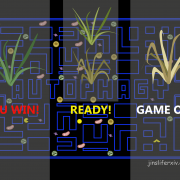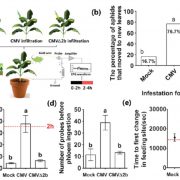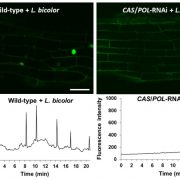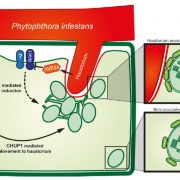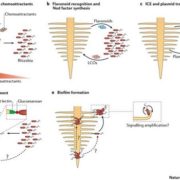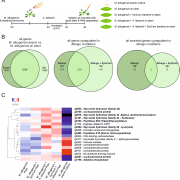Evolutionary transitions between beneficial and phytopathogenic Rhodococcus
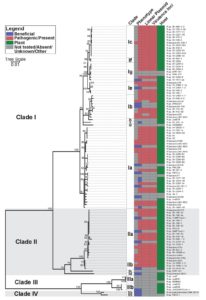 Rodococcus bacteria are often identified as causal agents in disease outbreaks. Savory et al. analyzed 60 isolates from diseased plants. By comparing these new isolates and previous isolates, they found that 64 of 66 pathogenic isolates carry a linear virulence plasmid, and that all but four carried genes previously associated with pathogenicity. A comparison of genomic and plasmid sequences indicated that the pathogenic isolates are more diverse than the plasmid, indicating that the virulence plasmid can be introduced through horizontal gene transfer and can be effective in diverse genetic backgrounds. When they lack the virulence plasmid, many of these isolates are in fact beneficial to plant growth. Therefore, the beneficial microbe can quickly switch to a pathogenic one simply by acquisition of the virulence plasmid. The authors observe that these bacteria are “model organisms for characterizing evolutionary transitions between alternative symbiotic states.” (Summary by Mary Williams) eLIFE 10.7554/eLife.30925
Rodococcus bacteria are often identified as causal agents in disease outbreaks. Savory et al. analyzed 60 isolates from diseased plants. By comparing these new isolates and previous isolates, they found that 64 of 66 pathogenic isolates carry a linear virulence plasmid, and that all but four carried genes previously associated with pathogenicity. A comparison of genomic and plasmid sequences indicated that the pathogenic isolates are more diverse than the plasmid, indicating that the virulence plasmid can be introduced through horizontal gene transfer and can be effective in diverse genetic backgrounds. When they lack the virulence plasmid, many of these isolates are in fact beneficial to plant growth. Therefore, the beneficial microbe can quickly switch to a pathogenic one simply by acquisition of the virulence plasmid. The authors observe that these bacteria are “model organisms for characterizing evolutionary transitions between alternative symbiotic states.” (Summary by Mary Williams) eLIFE 10.7554/eLife.30925


